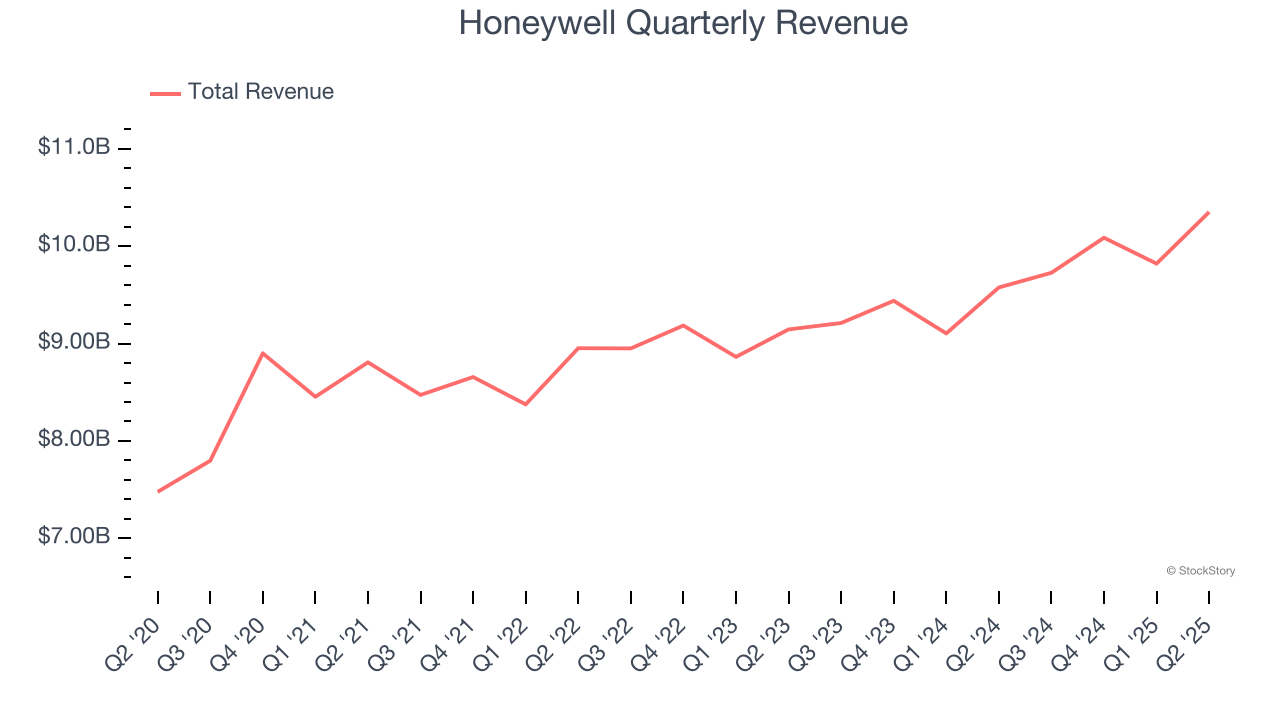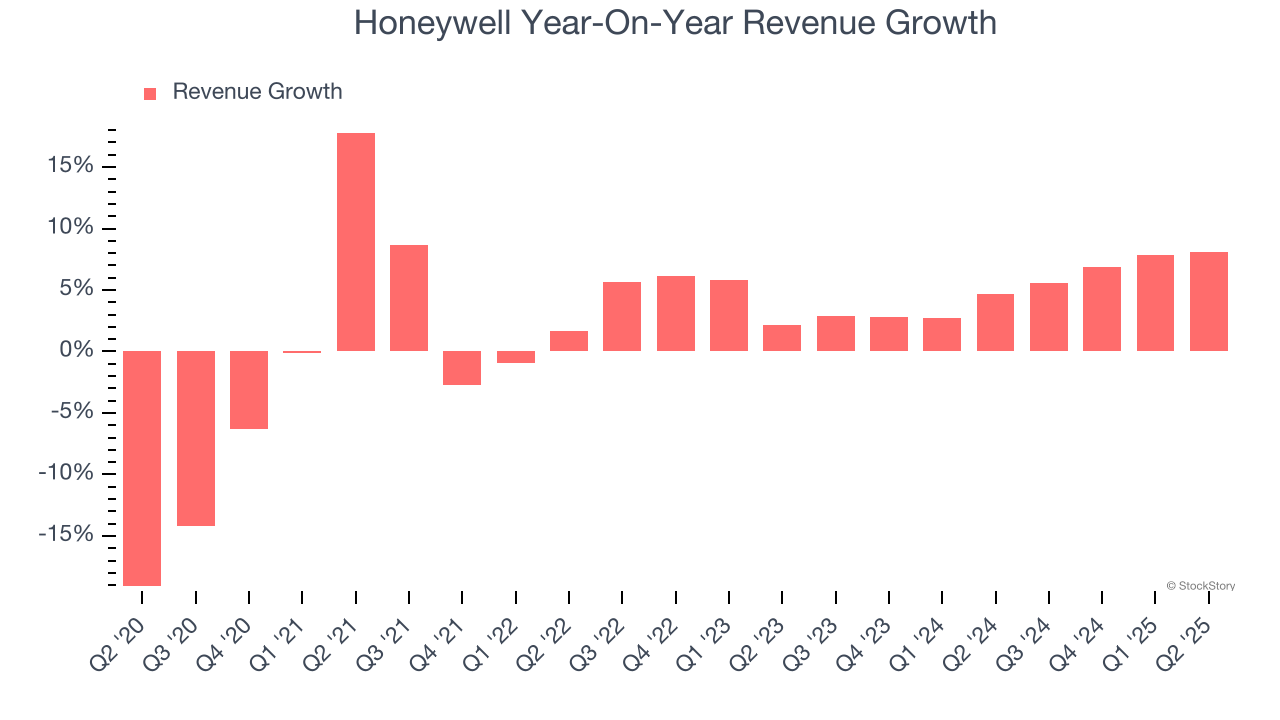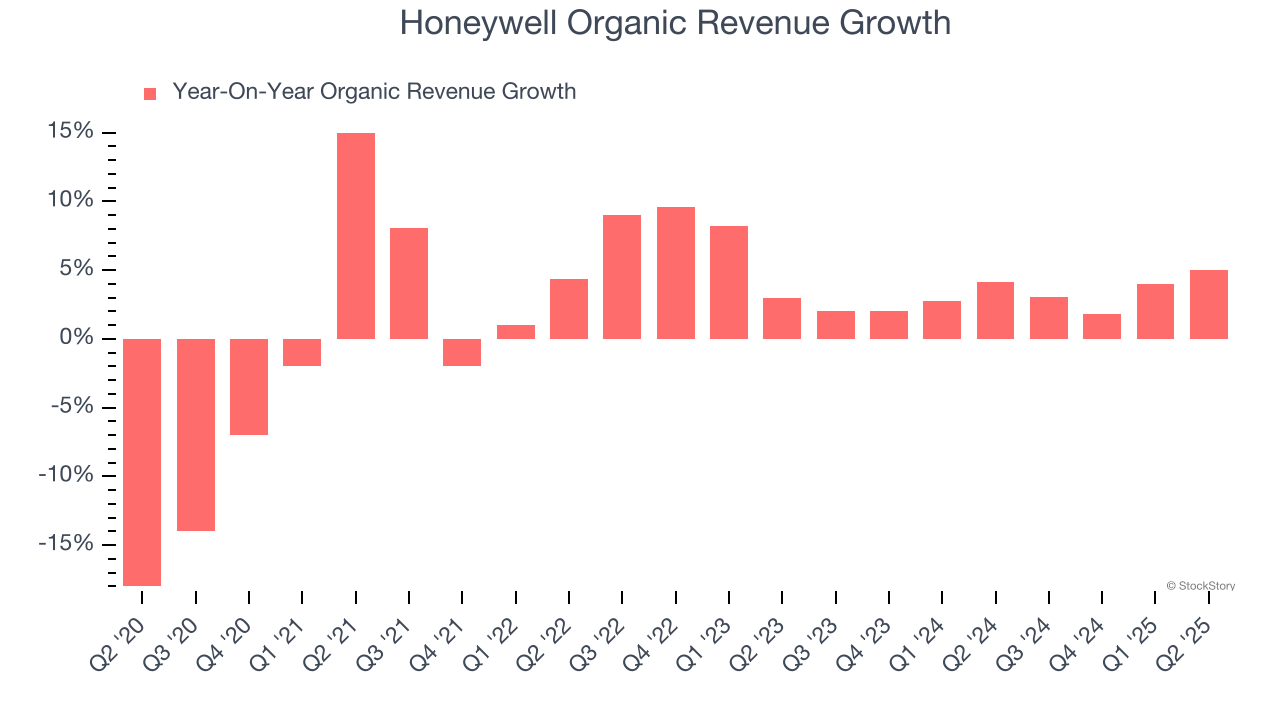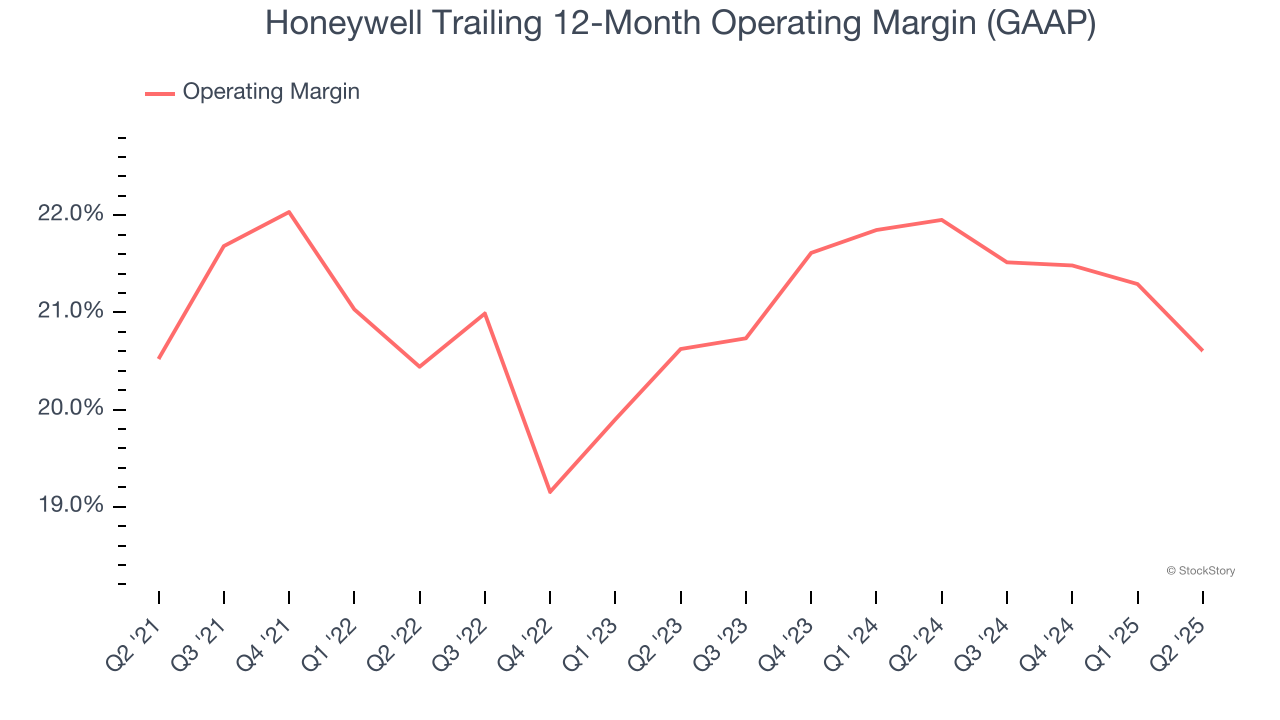
Industrial conglomerate Honeywell (NASDAQ: HON) reported Q2 CY2025 results topping the market’s revenue expectations, with sales up 8.1% year on year to $10.35 billion. The company’s full-year revenue guidance of $40.8 billion at the midpoint came in 1.2% above analysts’ estimates. Its non-GAAP profit of $2.75 per share was 3.5% above analysts’ consensus estimates.
Is now the time to buy Honeywell? Find out by accessing our full research report, it’s free.
Honeywell (HON) Q2 CY2025 Highlights:
- Revenue: $10.35 billion vs analyst estimates of $10.07 billion (8.1% year-on-year growth, 2.8% beat)
- Adjusted EPS: $2.75 vs analyst estimates of $2.66 (3.5% beat)
- The company lifted its revenue guidance for the full year to $40.8 billion at the midpoint from $40.05 billion, a 1.9% increase
- Management slightly raised its full-year Adjusted EPS guidance to $10.45 at the midpoint
- Operating Margin: 20.4%, down from 23.2% in the same quarter last year
- Free Cash Flow Margin: 9.8%, down from 11.6% in the same quarter last year
- Organic Revenue rose 5% year on year, in line with the same quarter last year
- Market Capitalization: $153.8 billion
Company Overview
Originally founded in 1906 as a thermostat company, Honeywell (NASDAQ: HON) is a multinational conglomerate known for its aerospace systems, building technologies, performance materials, and safety and productivity solutions.
Revenue Growth
A company’s long-term performance is an indicator of its overall quality. Any business can have short-term success, but a top-tier one grows for years. Regrettably, Honeywell’s sales grew at a sluggish 3% compounded annual growth rate over the last five years. This was below our standards and is a rough starting point for our analysis.

Long-term growth is the most important, but within industrials, a half-decade historical view may miss new industry trends or demand cycles. Honeywell’s annualized revenue growth of 5.2% over the last two years is above its five-year trend, but we were still disappointed by the results. 
Honeywell also reports organic revenue, which strips out one-time events like acquisitions and currency fluctuations that don’t accurately reflect its fundamentals. Over the last two years, Honeywell’s organic revenue averaged 3.1% year-on-year growth. Because this number is lower than its normal revenue growth, we can see that some mixture of acquisitions and foreign exchange rates boosted its headline results. 
This quarter, Honeywell reported year-on-year revenue growth of 8.1%, and its $10.35 billion of revenue exceeded Wall Street’s estimates by 2.8%.
Looking ahead, sell-side analysts expect revenue to grow 3.1% over the next 12 months, a slight deceleration versus the last two years. This projection doesn't excite us and implies its products and services will see some demand headwinds.
Here at StockStory, we certainly understand the potential of thematic investing. Diverse winners from Microsoft (MSFT) to Alphabet (GOOG), Coca-Cola (KO) to Monster Beverage (MNST) could all have been identified as promising growth stories with a megatrend driving the growth. So, in that spirit, we’ve identified a relatively under-the-radar profitable growth stock benefiting from the rise of AI, available to you FREE via this link.
Operating Margin
Honeywell’s operating margin might fluctuated slightly over the last 12 months but has remained more or less the same, averaging 20.8% over the last five years. This profitability was elite for an industrials business thanks to its efficient cost structure and economies of scale. This result isn’t surprising as its high gross margin gives it a favorable starting point.
Looking at the trend in its profitability, Honeywell’s operating margin might fluctuated slightly but has generally stayed the same over the last five years. This raises questions about the company’s expense base because its revenue growth should have given it leverage on its fixed costs, resulting in better economies of scale and profitability.

This quarter, Honeywell generated an operating margin profit margin of 20.4%, down 2.8 percentage points year on year. Since Honeywell’s operating margin decreased more than its gross margin, we can assume it was less efficient because expenses such as marketing, R&D, and administrative overhead increased.
Earnings Per Share
Revenue trends explain a company’s historical growth, but the long-term change in earnings per share (EPS) points to the profitability of that growth – for example, a company could inflate its sales through excessive spending on advertising and promotions.
Honeywell’s EPS grew at an unimpressive 6.3% compounded annual growth rate over the last five years. On the bright side, this performance was better than its 3% annualized revenue growth and tells us the company became more profitable on a per-share basis as it expanded.

We can take a deeper look into Honeywell’s earnings to better understand the drivers of its performance. A five-year view shows that Honeywell has repurchased its stock, shrinking its share count by 9.5%. This tells us its EPS outperformed its revenue not because of increased operational efficiency but financial engineering, as buybacks boost per share earnings. 
Like with revenue, we analyze EPS over a more recent period because it can provide insight into an emerging theme or development for the business.
For Honeywell, its two-year annual EPS growth of 6.6% is similar to its five-year trend, implying stable earnings.
In Q2, Honeywell reported EPS at $2.75, up from $2.49 in the same quarter last year. This print beat analysts’ estimates by 3.5%. Over the next 12 months, Wall Street expects Honeywell’s full-year EPS of $10.31 to grow 4.2%.
Key Takeaways from Honeywell’s Q2 Results
This was a beat and raise quarter. We enjoyed seeing Honeywell beat analysts’ organic revenue expectations this quarter. We were also glad its revenue outperformed Wall Street’s estimates. Looking ahead, the company lifted its full-year guidance, which is icing on the cake. Overall, we think this was a solid quarter with some key metrics above expectations. The stock traded up 1.9% to $244 immediately after reporting.
Sure, Honeywell had a solid quarter, but if we look at the bigger picture, is this stock a buy? If you’re making that decision, you should consider the bigger picture of valuation, business qualities, as well as the latest earnings. We cover that in our actionable full research report which you can read here, it’s free.






